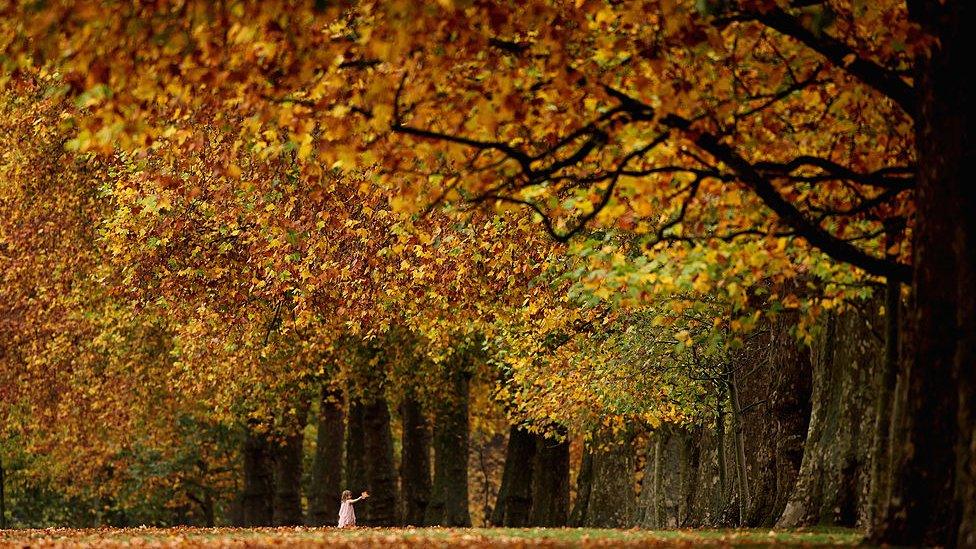Why do leaves change colour in autumn?
- Published
- comments

When you think of autumn what comes to mind? For lots of people, it's the leaves turning brown.
But have you ever wondered why some trees' leaves change colour around this time of year?
Trees called evergreens keep their leaves all year round but deciduous trees' leaves change colour and fall off when the season changes.
It's all to do with the days getting shorter and there being less sunlight.
Find out why, here!
Before we get to that, what's your favourite thing about autumn? Tell us in the vote below.
Why do leaves turn brown?
For trees to grow, they need three things - sunlight, nutrients and water.
In the summer months, leaves use a chemical called chlorophyll to capture sunlight. This is what makes them green.
The chlorophyll turns the sunlight into food for the tree and it helps trees grow. The food they make is sugar and it's used to grow new leaves, flowers and seeds.
The process is called photosynthesis. You might have already heard about this word in your science lessons!
As autumn arrives, the days get shorter, it gets colder and there is less sunshine for the leaves to make food with.
When trees realise that winter is about to begin, they start breaking down the chlorophyll (green) that is stored in the leaves to get the nutrients out.
This allows trees to store all the nutrients from their leaves in their roots, which are protected from the cold during the winter months.
As the plants break down, the chlorophyll green colour disappears from the leaves, leaving behind other colours you normally can't see.
This is when the magic colours of autumn begin to appear, as leaves turn orange, red and yellow.
At the end of this colourful process, leaves die.
Some trees shed their dead brown leaves because they are no longer able to get energy from them through winter.
By shedding their leaves, trees are able to survive because they make room for new growth in the spring.
How does the weather impact the autumn season?
The weather plays a big part in how long the autumn colour lasts.
Heavy wind or rain can cause the leaves to fall before they fully develop colour and cold temperatures can weaken the vibrant colours.
But warmer weather can create a 'false autumn'.
Over the very hot summer, you might have noticed that leaves were already falling to the ground.
This was nature's response to the hot and dry weather.
WATCH: Why is climate change a problem? (from October 2018)
As the world experiences warmer temperatures due to climate change, it is likely that the autumn season will be affected.
According to the UK's weather service - the Met Office - in cooler countries like the UK we may see crops growing later into the year, and milder weather in autumn.
And some scientists believe milder temperatures might lead to shorter autumns, as leaves and plants thrive in warmer temperatures for longer.
But Forestry England suggests that while the colours of autumn might last later into the year, more extreme weather events like storms and high winds could cause leaves to drop earlier before their colours have changed.
- Published20 October 2021
- Published18 May 2021
